Covid: Why has Peru been so badly hit?
- Published
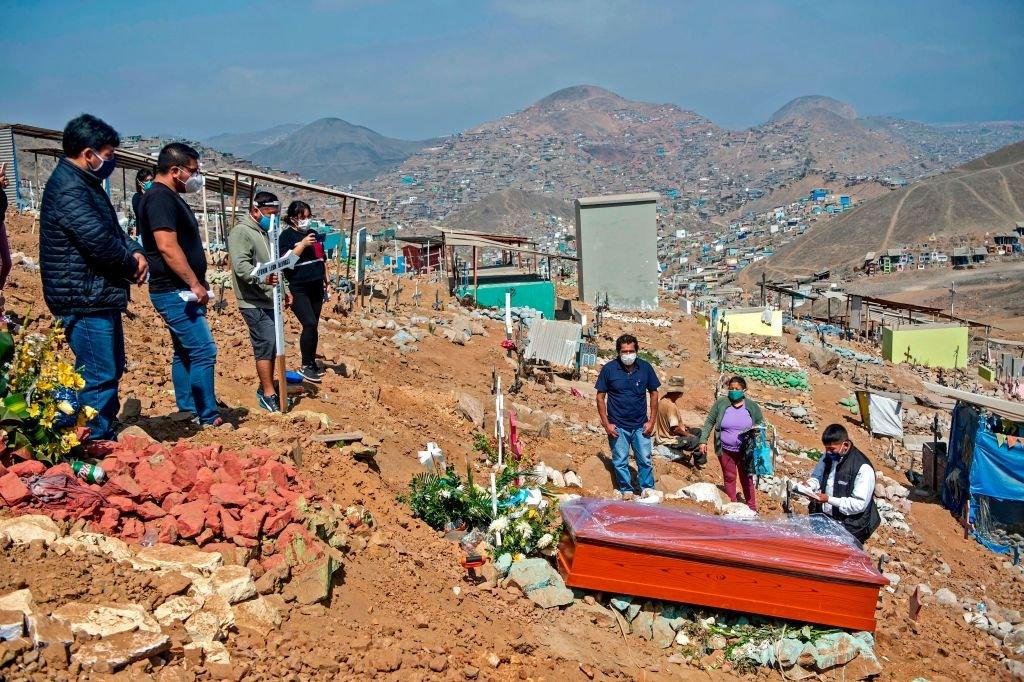
Peru has the highest Covid death rate as a proportion of population in the world, according to the latest data.
Its official death toll has more than doubled, after the criteria for recording Covid deaths were changed following a government review.
So why has Peru been affected so badly?
How many people have died?
Up until recently, deaths in Peru were only reported as Covid deaths if there was a positive test result to back it up.
But throughout the pandemic, excess death figures suggested that the real Covid death toll might be much higher.
Excess deaths account for how many more people are dying than would be expected based on the previous few years.
Since the start of the Covid outbreak, Peru has recorded around 150% more deaths than would be expected.
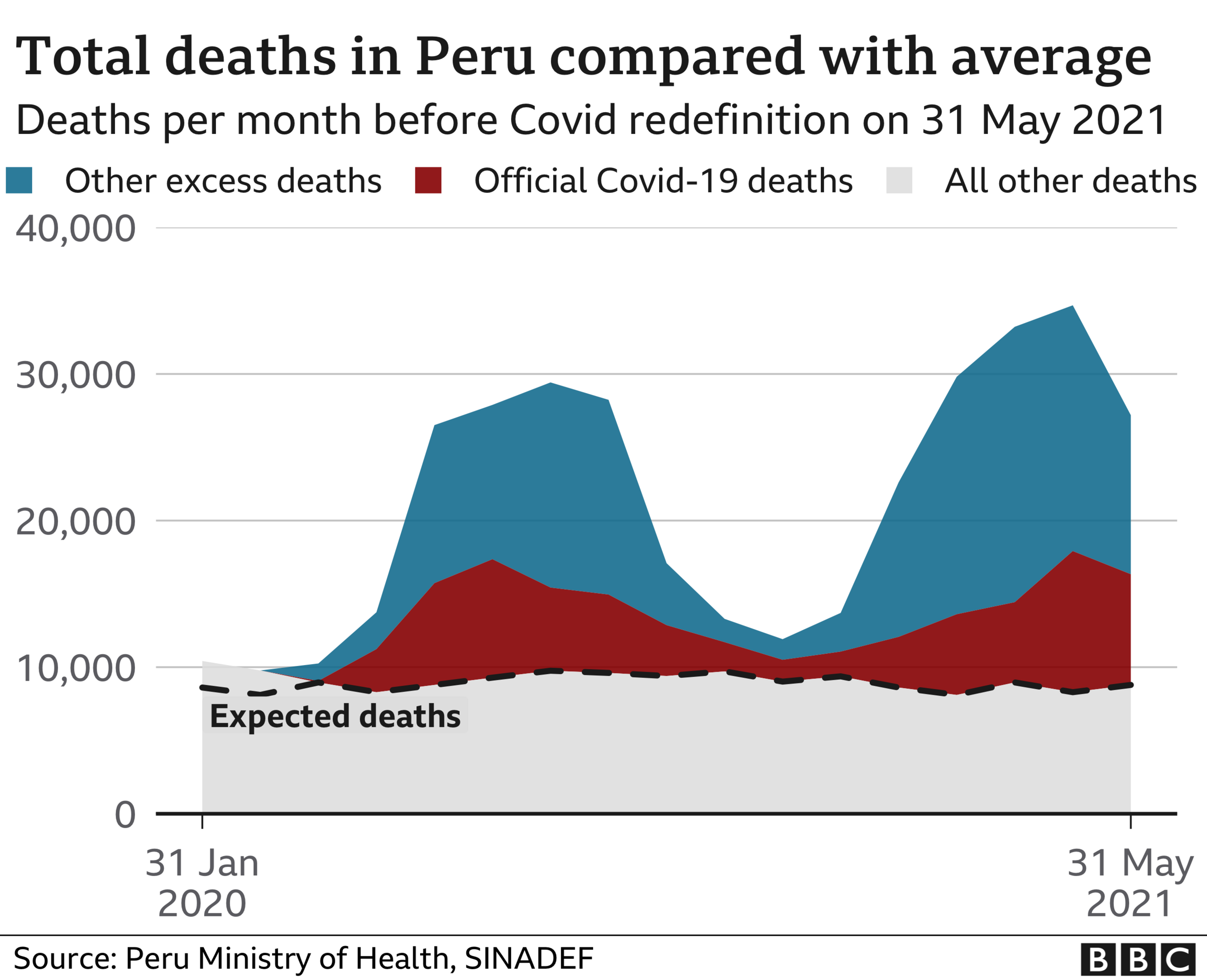
Following a review by Peru's government, the criteria for recording Covid deaths have been broadened out to include people who died within 60 days of a positive test, as well as suspected cases without a positive test.
This includes people whose clinical assessment or medical examinations suggest Covid, as well as those who've been in contact with a confirmed case.
Countries record Covid deaths in different ways, making direct comparisons tricky.
However, the latest figures out of Peru mean its death rate per capita is now one of the highest, if not the highest, in the world.
The official death toll is more than 180,000, in a country of less than 33 million people.
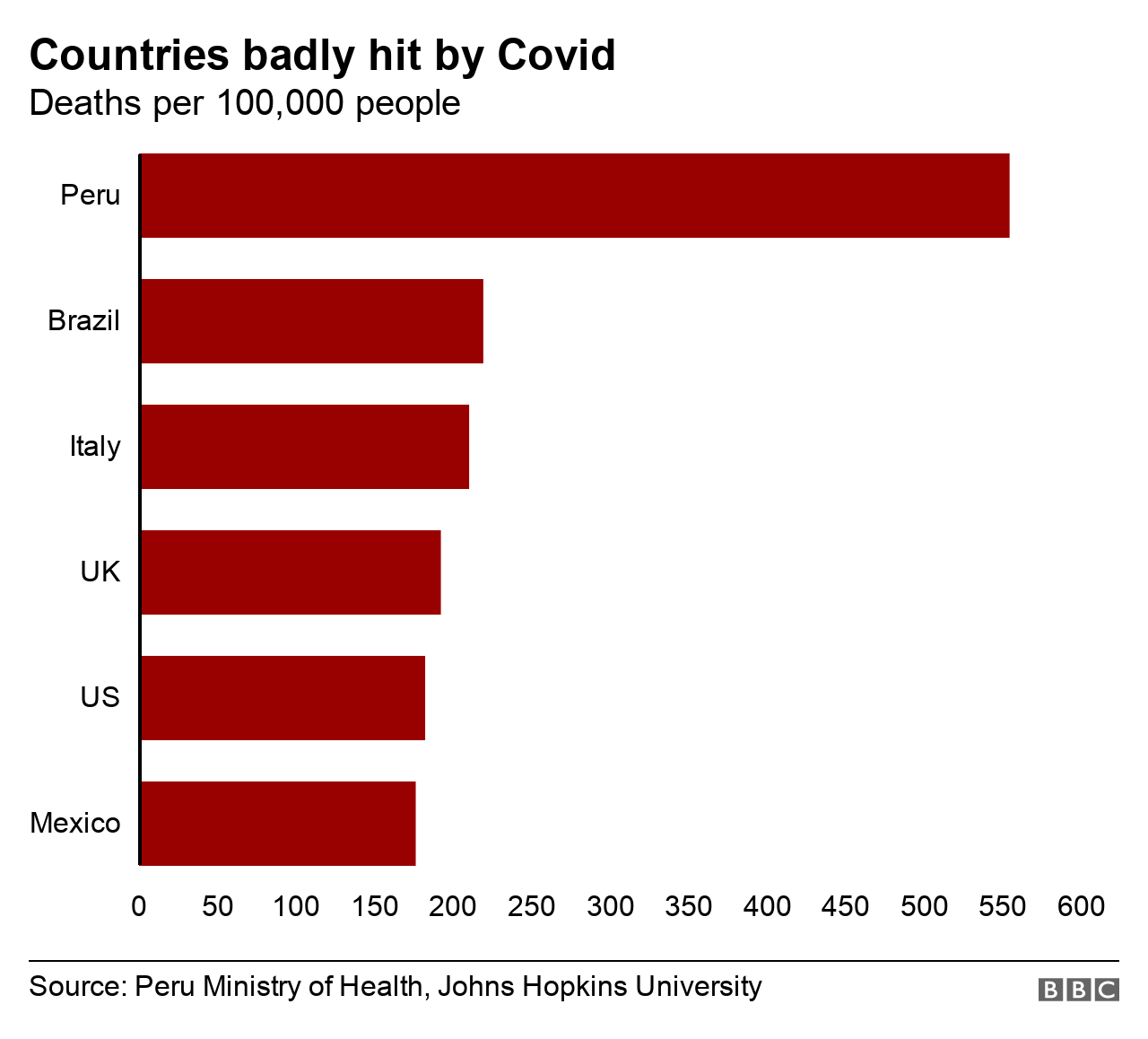
Why has Peru been so badly hit?
Peru imposed one of the earliest and strictest lockdowns in Latin America back in March 2020 - before the UK and some other European countries.
This lasted until the end of June 2020.
The county's borders were shut, curfews were imposed, and people could only leave their homes for essential goods - but infections and deaths continued to rise.
A second lockdown was introduced in January this year in the capital Lima and nine other regions, external following a wave of infections which brought hospitals close to collapse.
Experts say Peru's healthcare system was underprepared, and lacks sufficient funding.
There's also been shortage of oxygen needed to treat Covid patients, and the entire country has around 1,600 intensive care unit beds - far less than some neighbouring countries. , external
Slow vaccine rollout
Peru's vaccination drive has been slow, with less than 4% of the country fully vaccinated.
This is behind many other countries in Latin America.
Brazil and Mexico have fully vaccinated around 10%, and Chile has done the most, with more than 40% fully vaccinated.
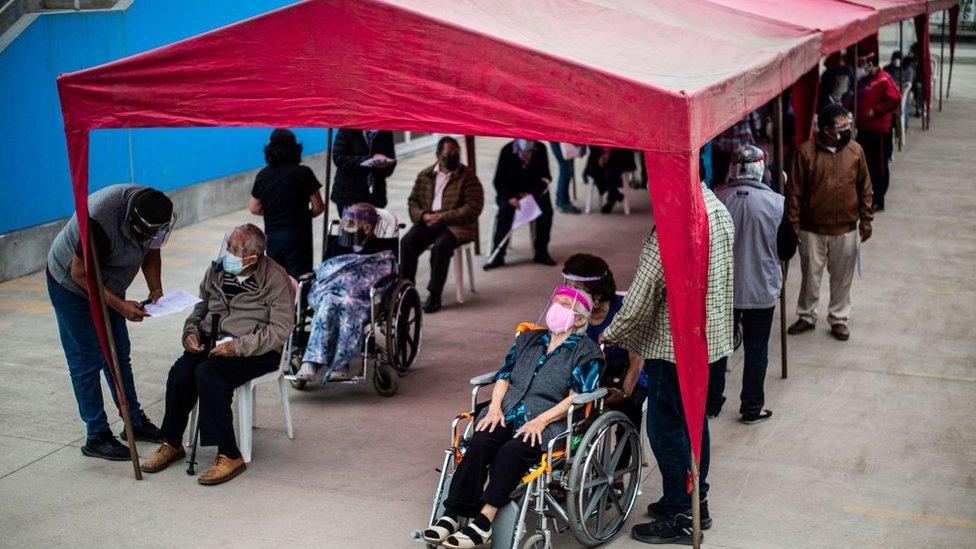
Elderly citizens wait for their turn to get a jab at a vaccination centre in Lima
Peru has secured enough doses to vaccinate its entire population, but many of these vaccines are yet to be delivered and the rollout so far has failed to stem infections.
Covid cases remain high - with more than 4,000 reported daily.
Informal economy and overcrowded housing
There are also several social and economic factors that can help explain why Peru has struggled to contain Covid cases.
About 70% of the employed population in Peru work in the informal sector, which is one of the highest rates in Latin America.
These jobs are by their nature unpredictable, and mean many workers have to chose between going out to work or not having enough money to survive.
The government has passed significant support measures to help people who lost their jobs and companies that lost income due to the pandemic - but only about 38% of Peruvian adults have a bank account, making quick digital payments largely impossible.
"Peruvians who went out to work had to use public transport, and to sell goods in very crowded markets," Peruvian economist Hugo Ñopo told the BBC.
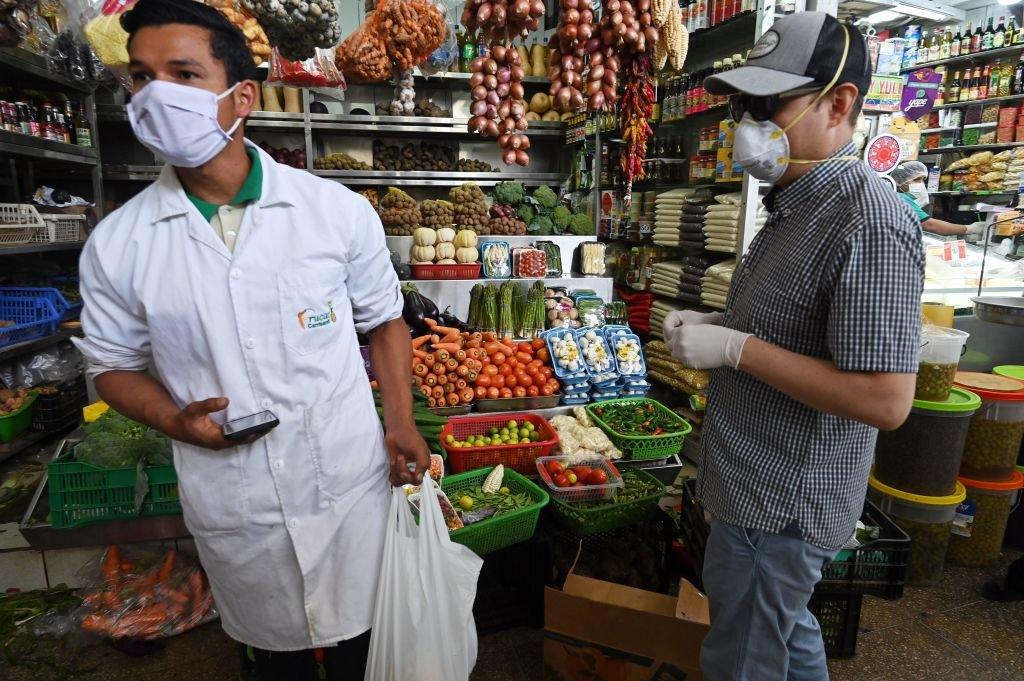
Shoppers wearing face coverings in a market in Lima
More than 40% of households in Peru do not have a refrigerator, according to a 2020 government survey., external
Many households "do not have logistics that allow them to stock up on food for many days", Ñopo says.
"They have to go out to stock up frequently and especially go to the markets," he adds.
Early in the pandemic, the markets which many Peruvians rely have been identified as "the main sources of contagion" by government.
On top of this, the latest National Household Survey suggests 11.8% of poor households in Peru live in overcrowded homes.
Cramped housing makes social distancing harder and allows the virus to spread more easily.

EASY STEPS: How to keep safe
A SIMPLE GUIDE: What are the symptoms?
CONTAINMENT: What it means to self-isolate
MAPS AND CHARTS: Visual guide to the outbreak


